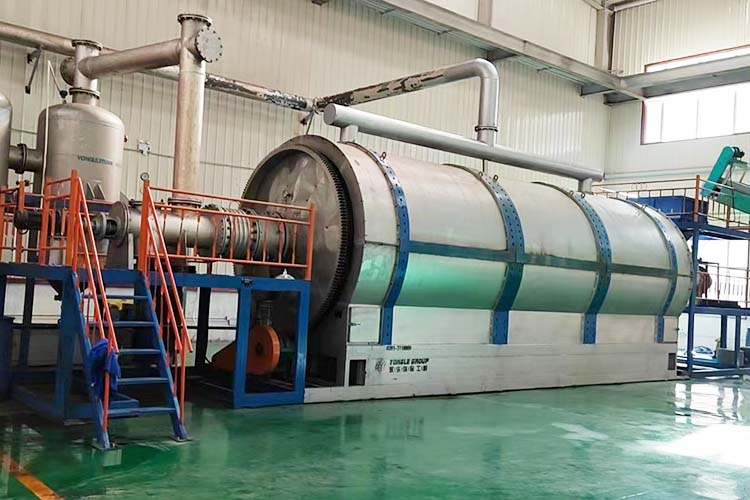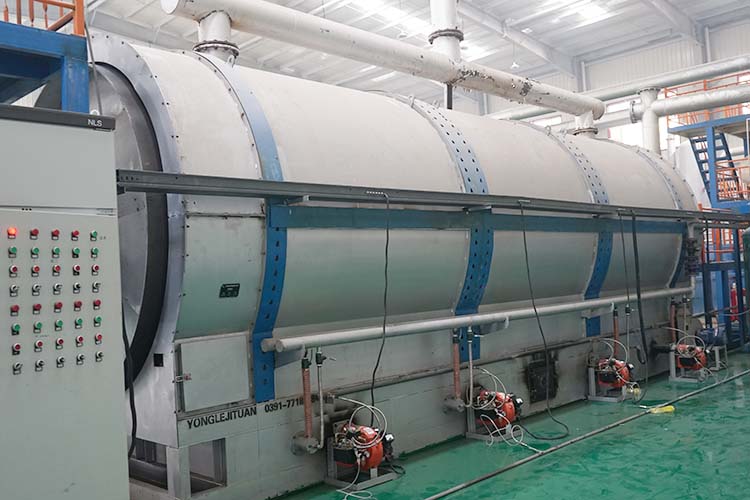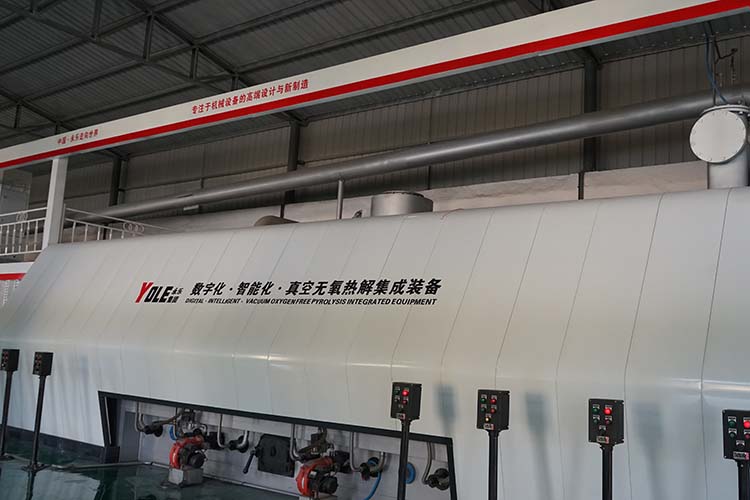In the field of medical waste disposal, effectively managing medical waste is a significant issue. Medical waste treatment equipment realizes the harmlessness and reduction of pollutants through thermal conversion technology. This equipment employs staged pyrolysis and gasification treatment processes, tailored to the diverse shapes and complex compositions of medical waste, creating a complete energy conversion chain and providing the industry with a solution that balances safety and economic efficiency.
The main body of the equipment consists of a pyrolysis reaction system and a gas purification unit. After medical waste enters a closed pyrolysis device, a thermochemical reaction occurs under a specific temperature control mode. By precisely adjusting the oxygen concentration, the system promotes the decomposition of organic matter in an oxygen-deficient environment, generating combustible gases such as carbon monoxide and methane, along with inorganic residues. The internal design utilizes zoned temperature management; while maintaining a low-temperature environment in the main reaction zone, a high-temperature zone of approximately 850°C is created in the slag layer. This ensures complete cracking of organic components and encourages inorganic materials to form stable vitrified products. This staged temperature design effectively balances energy consumption and treatment effectiveness, forming a self-sustaining reaction system.

The generated combustible gas immediately enters the gas treatment channel, where it forms a uniform mixed gas flow with the combustion medium in a mixing enhancement device. The system employs fluid dynamics optimization structures, creating turbulence effects through multi-angle air intake, allowing gas components to be homogenized within milliseconds. The mixed gas then enters a secondary combustion chamber, where deep oxidation occurs in a high-temperature environment of 850-1100°C. With a gas residence time of over two seconds, it ensures the complete mineralization of organic pollutants. This combustion unit utilizes flow field control technology to achieve uniform temperature distribution, eliminating the conditions for the generation of harmful substances such as dioxins while maintaining stable thermal efficiency.
The central operating system features an intelligent control strategy that dynamically adjusts the pyrolysis and combustion units. By monitoring key indicators such as temperature, pressure, and gas composition in real-time, it automatically matches feed rates, oxygen proportions, and energy recovery intensity. This collaborative control mechanism not only guarantees the complete decomposition of various types of waste but also significantly reduces auxiliary fuel requirements through energy recycling. Data indicates that when processing conventional medical waste, the system can recover over 60% of its self-sustaining heat energy, forming an efficient energy circulation system.

Regarding environmental emissions, the equipment is equipped with multiple purification and protective measures. High-temperature flue gases are rapidly cooled by an emergency cooling device and then pass through an alkaline adsorption layer and a high-efficiency filtration module, effectively removing acidic gases and particulate matter. Detection of the solid products shows that their heavy metal leaching values are below relevant standard limits, allowing for safe landfill disposal. The entire system employs a negative pressure design, completely preventing the leakage of harmful substances, resulting in no significant odor diffusion at the treatment site.

The technical characteristics of this equipment demonstrate significant advantages in engineering practice. Its modular structure can adapt to different processing needs, and core components are made from corrosion-resistant alloy materials, ensuring long-term stable operation in highly corrosive environments. Additionally, the integration of pyrolysis and gasification technology with intelligent control provides a new technological pathway for the harmless disposal of medical waste, particularly in achieving energy self-sufficiency and emissions control. As the volume of medical waste continues to grow, the promotion and application of such integrated treatment equipment will help to enhance the overall disposal levels in the industry.
Yongle Environmental Protection is mainly engaged in the research and development, production and sales of complete sets of technical equipment for organic solid waste disposal and comprehensive utilization. Production and manufacturing, domestic waste treatment equipment, tire pyrolysis equipment, medical waste disposal equipment, hazardous waste disposal equipment, and achieve efficient and comprehensive utilization of resources through independently developed low-temperature anaerobic pyrolysis equipment technology solutions.
Tags:Application and advantages of thermal conversion technology for medical waste treatment equipment,medical waste treatment equipment,YONGLE GROUP
 Latest news
Latest news


























